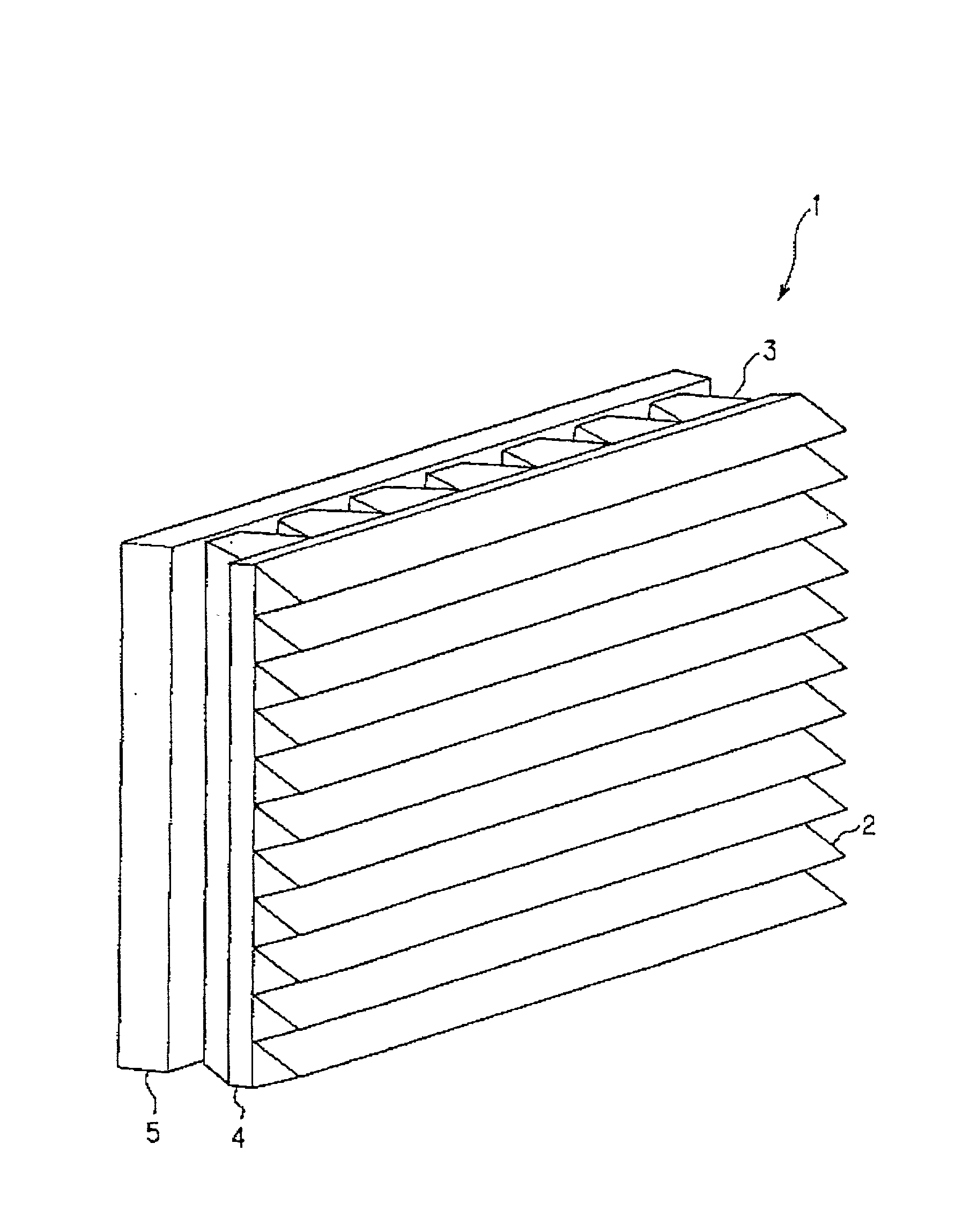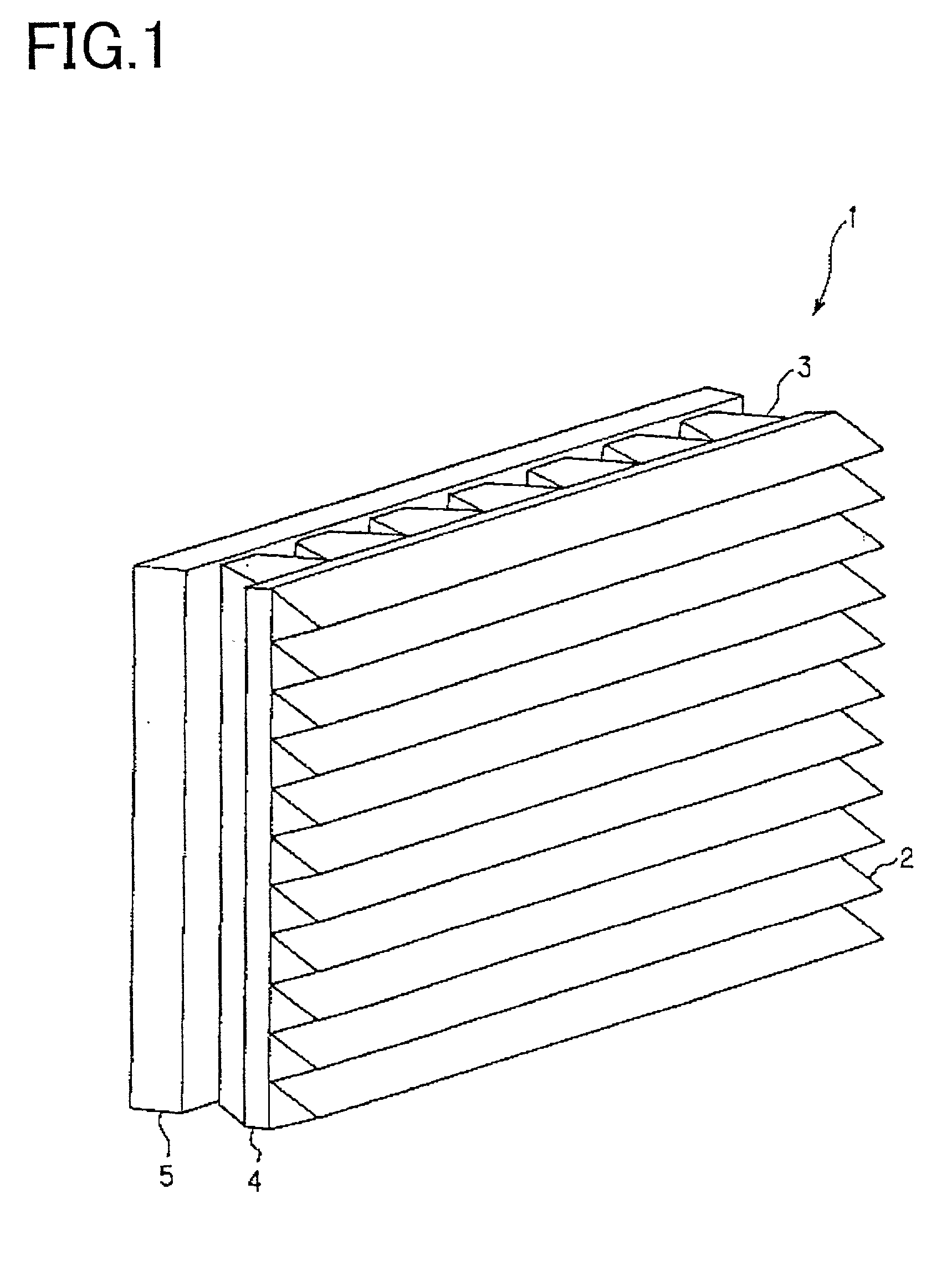Sheet for use for projection screen, light diffusion sheet and projection screen
a technology of projection screen and light diffusion sheet, which is applied in the direction of instruments, projectors, optics, etc., can solve the problems of difficult continuous production, difficult operation of handling, and difficult image for viewer to s
- Summary
- Abstract
- Description
- Claims
- Application Information
AI Technical Summary
Benefits of technology
Problems solved by technology
Method used
Image
Examples
second example
[0183] On the viewer side of the projection display device 20 there has been laminated an AR film. As a result of this, a projection display device the reflectance of that is approximately 0.8% and the transmittance of that is approximately 88% could be obtained.
sixth and seventh embodiments
[0184] FIGS. 11 and 12 are views illustrating horizontal cross sections of the light diffusion sheets S1 and S2 according to the sixth and the seventh embodiments of the present invention. In each of these figures, on the right side of the illustration there is disposed an image light source while, on the left side of the illustration there is located the viewer.
sixth embodiment
[0185] FIG. 11 illustrates the light diffusion sheet S1 according to the present invention. In this light diffusion sheet S1, from the viewer side toward the image light source, there are sequentially disposed a diffusion agent mixed sheet 101, unit lenses 102, and a base sheet 103 in the way they are bonded together. The unit lens 102 is formed using a material having a high refractive index N1. Further, in a portion that is defined between two adjacent of the unit lenses 102 and 102 and the cross sectional configuration of that is triangle (hereinafter referred to as "the between-lens portion 107"), there is embedded a material that has been prepared by adding the light absorption particles 105 into a transparent material having a refractive index N2 lower than the N1 (hereinafter referred to as "the transparent low refractive index material 106").
[0186] In this embodiment, the ratio between the refractive index N1of the high refractive index portion 102 and the refractive index N...
PUM
 Login to View More
Login to View More Abstract
Description
Claims
Application Information
 Login to View More
Login to View More - R&D
- Intellectual Property
- Life Sciences
- Materials
- Tech Scout
- Unparalleled Data Quality
- Higher Quality Content
- 60% Fewer Hallucinations
Browse by: Latest US Patents, China's latest patents, Technical Efficacy Thesaurus, Application Domain, Technology Topic, Popular Technical Reports.
© 2025 PatSnap. All rights reserved.Legal|Privacy policy|Modern Slavery Act Transparency Statement|Sitemap|About US| Contact US: help@patsnap.com



